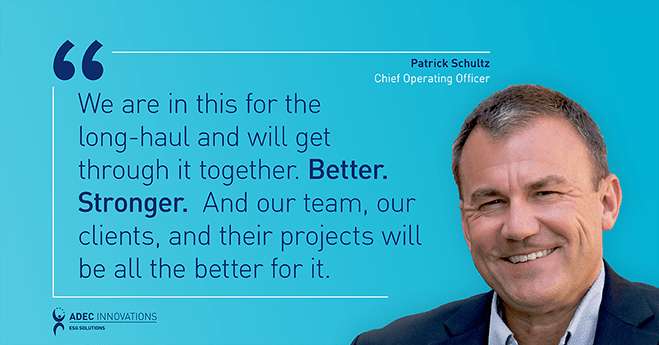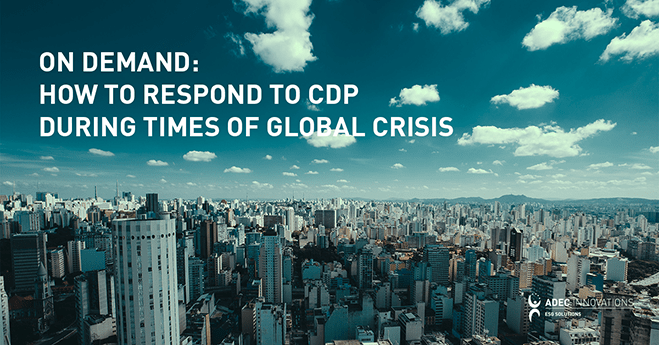It’s 10:30am. It’s a bright, sunny day, and I’m desperately yawning through my (second) cup of coffee. Why am I already so tired? Oh, yes: I got up at 5:30am to get 2.5 hours of work in before heading downstairs to start my school day.
Well, not my school day. As one the 93% of households with school-age children engaging in distance learning since March 2020, when COVID-19 began turning our homes and our world upside-down and around, I am here to support my kids’ school day, and the teacher, and make sure the kids are in their virtual classes, and have their headphones plugged in, and are paying attention, and are completing and turning in their assignments. I am also here to support the kids—with tech issues, snacks, pencil sharpening, schedules, spelling words, and meltdowns (both theirs and my own). General Mom stuff—amplified.
My personal daily requirements include high energy, thick skin, nerves of steel, patience, and alertness. A close-knit crew of first and second graders can tell when I’m ‘on’—whether I’m really watching them. They have already figured out how to quickly minimize YouTube or a video game when I walk up, and how to discern parental footsteps coming from behind.
I should mention that I am able to work from 5:30-8am each morning because I have a husband also working from home since March. He has the flexibility to manage his own work schedule to get the kids up, fed, dressed, teeth (and maybe hair) brushed, and ready to learn while I’m working. He starts his own day when I tag in, 30 minutes later (on a perfect day) than the rest of his office. I think I remembered to say, ‘Good morning,’ to him today, although I’m not quite sure, since we run a continuous relay race every weekday.
…being a Mom is about juggling a bunch of balls in the air. Some are glass; some are plastic. Our job as Moms is to make sure the glass ones stay in the air.
Make no mistake. I am speaking from a perspective of privilege, and I am acutely aware of this. I am proctoring (wouldn’t even try to pretend I’m teaching these children anything other than how to justify a pajama day) for four kids who are all at or above grade level and are well-adjusted. They live in homes where both parents live (and currently work), and they have one parent who works part time and can devote hours to proctoring (whether they want to or not). I cannot fathom, nor would I pretend to know, what it must be like for families with more complicated situations than mine. So, the complaining feels selfish.
We are healthy. We have jobs. We have space for six people to work. My company, FirstCarbon Solutions (FCS) is incredibly supportive of working parents, both pre-pandemic, and more officially now. And yet, it is still difficult. I take pride in the career I have built, and yet many times since March I felt like I was failing at work – am failing at work. There is a constant feeling of needing to catch up. There are hundreds of bolded emails screaming at me from my inbox every time I come back to the computer.
I also feel like I’m failing as a Mom, and as a wife, and as a friend, a daughter, a sister. The list goes on. I used to have a great sense of work-life balance; now I feel like I have less balance than ever before.
My colleague gives a great analogy: being a Mom is about juggling a bunch of balls in the air. Some are glass; some are plastic. Our job as Moms is to make sure the glass ones stay in the air. Even though it’s clear which are the glass ones right now, it still feels like I need to juggle them all.
With the pandemic reshaping the notion of work-life balance, there is no perfect or simple solution. In trying to figure out how to begin the long journey back to a sense of normalcy at home and at work, I’m revisiting some of the things that (used to) work for me. How can I prioritize? Where can I improve?
1. Create a dedicated workspace.
I’ve worked from home since my twins were born in 2012, and at that time I set up a dedicated workspace. It was always my rule that the only thing I did in that space was work. And I didn’t work in any places other than that. It always seemed to help compartmentalize work and home.
That’s out the window. School is at home now, and my laptop leaves my office. I’m writing this at the dining room table while the kids are at opposite ends, participating in Spanish class. Kids creep into Zoom backgrounds, and they see me working. Most work meetings start with some reference to my kids and/or distance learning. Although I’m not doing much compartmentalizing these days, I’m doing my best to make it work.
2. Make time to plan.
It seems so basic, and yet I find myself forgetting to do it. I’m working within a few concentrated windows of time each day, and when I log on, it feels like a mad scramble to kill the sharks closest to my body rather than anything close to strategic.
I read an approach to planning from theSkimm called the ‘D’ List:, which is divided into three sections:
Doing: 1-3 tasks that must get done that week
Dealing: personal and work tasks that should get done
Dreaming: something exciting or inspiring that I’d like to explore (articles, art, planning personal goals)
I like this approach because it’s broken into a weekly model, rather than daily. Because the days are too unpredictable for me right now, looking at the whole week seems more manageable for goal setting.
3. Pause.
I recognize part of my lack of planning comes from always reacting. Can I say something that will make you hate me? Yoga has helped. It doesn’t have to be yoga, and it doesn’t have to be an hour, and you don’t have to be in full crane or tree pose. What I’m referencing is the ability to stop whatever it is I’m doing and truly be present in the moment. This may be taking deep breaths for one solid minute, and I may need to set an alarm to make sure I breathe. It may simply be leaving my phone in one room while I’m in another with my kids. It may be locking the door and creating a physical barrier that my kids can’t (or haven’t yet figured out how to) break down so that I can have two work calls free of physical and audible distractions. Even if only for one moment per day, taking that moment or that physical space to be present, rather than continually reacting to the environment around me, was immensely helpful in dealing with the early stages of the pandemic. I realize that when I pause and am truly present with whomever I’m with when I’m with them, I am less frustrated, I make better decisions, and I am more effective.
4. Communicate.
Communication is the key. The key at work. The key at home. The key in relationships. Just as it always has been. Now take that up several (hundred) notches. Being anything less than transparent right now is counterproductive, and maybe even destructive…to my coworkers, to my relationships, to my family, and to me. I need to be honest with the most important person: Me. It’s important to truthfully evaluate how I’m handling this global crisis. Everything else trickles (or avalanches…can that be used as a verb?) down from that. Communicating with my family and my colleagues on what I can handle in the day-to-day tasks, as well as the gloom and doom of the news cycle, helps us work together to figure out new ways of getting it all done.
Letting my company know how my family and I are handling things, physically and mentally, even if that changes by the hour, is critical to my ability to function. One of my greatest fortunes during this pandemic has been working for FCS. They have provided resources for mental health, and they even created a task force around how they can better support working parents. They’ve restructured the qualifications and benefits for part-time employees. They’ve reinforced flexible work schedules. Notably, they did this all proactively. I can’t promise that every company will be as supportive as FCS has been. I do think the globe has been shaken by the staggering numbers of women leaving the workforce, and that companies may be willing to provide more support than employees would guess.
5. Say, “No.”
The hardest part of communicating (for me, anyway) is saying, “No.” From a macro level, the goals should be reset. The expectations should be recalibrated. At home and at work. We are under a level of mental pressure many of us have never felt, and what we’re capable of personally and professionally may need to be dialed back a bit. That starts with me, though. What is wrong with me? Why can’t I say no? (For example, to this blog post.) When my boss and my COO suggested I might be able to offer some perspective to other parents, I just added “write a blog post” to my list. I knew I didn’t have the time, nor the energy. (Case in point: this has been on my to-do list for three months.) I need to prioritize what I take on and, in some cases, just not take it on.
As a Type A, oldest child turned working Mom, I have spent a lifetime being everything to everyone, to always just getting it (all) done. Now is the time to set boundaries. Setting office hours has been helpful for me. It provides a sense of structure for me and for others. I know it seems like a joke to be able to set anything in stone. I’ve found that even providing a one or two-hour window of availability each day means that people have an opportunity to vie for my time, and it may even help pare down some unnecessary meetings. It also empowers me to say, “This is when I am available. This is how my schedule works.”
If I don’t think I can say, “No,” I need to ask for help. It’s hard. I’m not good at this, so the fact that I’m telling others it’s key to surviving is laughable. Creating a school pod with another family has been invaluable for my family. Figuring out the logistics can be challenging; understanding everyone’s comfort level demands honest conversations. Partnering with a family that we feel safe around has given the parents some much-needed relief from the daily pressures of proctoring school, and some much-needed time in the day (other than 9pm-midnight), to dedicate to work or home responsibilities; and it’s given the kids some much-needed socialization. Bonus: for the Type A, it doesn’t feel like ”asking for help,“ since we trade off days and weeks.
6. Let go of what you can’t control.
There’s a page hanging on my refrigerator that my then-Kindergartener colored and brought home from school last March. It says, ”Learn to let go of things you can’t control.“ I laughed when she brought it home, thinking Mrs. Orsini was trying to prep the kids. I thought we’d leave it up while distance learning was going on. It’s been hanging there for ten months; my daughter has officially entered the second half of first grade. Remember that book by Robert Fulghum? All I Really Need to Know I Learned in Kindergarten? I think that rings mostly true. And, this mantra our Kindergarten teacher gave us can be applied to home, to (remote) school, to work. It’s an important lesson.
Having twins and then another daughter within 15 months made me (or exacerbated my natural tendency to be) a control freak. I’m suffocating in this environment where every other external factor is calling the shots for me. I’m used to telling people how and when I’m going to do things, and instead, someone (everyone) and something (everything) else is controlling that. And it’s changing by the day— sometimes by the hour. It feels as though all the control and all the choice has been taken out of everything. Even now, as I work while the rest of the house is asleep, I am lucky that my company is flexible enough to allow me to work when it is convenient for me. At the same time, this is not how I would choose to spend these three hours. While I can’t control what’s going on, I’m trying to be cognizant of how I react to it.
7. Have empathy.
In this time when we’d like to come together in solidarity, I find a surprising lack of empathy. It’s no one’s fault. I can’t expect someone whose challenges are different than mine to understand the balls I’m juggling, just as I can’t understand theirs. That doesn’t make it easier to hear the disappointment (or frustration) in their voice, or their honest assessment that ”you don’t seem to have any availability.“ Well, if that isn’t the best descriptor of my current state, I don’t know what is. They’re right. And they’re right about more than just my work schedule…I’m unavailable physically or mentally to basically everyone in my life! Yet if I can step outside myself, maybe there’s more to it.
Maybe they’re waiting for their COVID results. Maybe their kids are struggling in school. Maybe they just opened their own inbox containing 572 unread emails. Maybe their Mom is sick. Maybe they live alone and are feeling the isolation of not being able to date, to see friends, to go to a crowded restaurant. I feel for all of us. The frustration is real. The anger is real. The grief is real. The uncertainty is real. The mental fatigue is real. The physical exhaustion is real. This is not anyone being dramatic; no one is overreacting. I think we are all worthy of some grace. Asking what others can do, instead of pointing out what they can’t, is the most productive thing I can do, both at work and at home.
8. Get fresh air.
It should be noted that I’m writing this at 9pm, still wearing the workout clothes (sneakers included) that I put on at 5:30am so that I would peer pressure myself into getting out for some air and activity. That didn’t happen today, and there are many days it doesn’t. I know that taking a walk around the block or even sitting on the deck for 15 minutes can really change the course of my day. It does the same for my kids. Even in the 23-degree winter cold, they are so much happier after some time in the backyard. I have a lot of co-workers that schedule blocks on their work calendars to be sure they get this time in. And I think that “meeting” with myself and the outdoors is as important (or more) than some of the other meetings on my calendar.
I’m not trying to say that I know how everyone should navigate this pandemic. The sheer length of this global crisis means that many of us are going through high highs and low lows. It feels manic. One day (or hour, or minute), the Mom of three kids under 8 thinks, ”All this family time is something we’ll never get back. We’re so lucky it’s happening now when the kids are young and want to be around us.“ The next minute, I’m internally screaming and panicking, ”WHEN will this end? I need to see friends. The kids need to see friends. The kids hate school now. The kids hate ME now.
I realize I’m sort of coming full-circle and starting over…back to 2011, pre-kids, pre-COVID, pre-social isolation, and re-learning how to successfully work from home, instead of letting work take over my home or home take over my work.
So now it’s 9pm. I’m back at the computer to finish up my work/day, but I’m having a hard time focusing. Why is it so hard for me to pull together the key takeaways from this weekly KPI report that I wrote myself? Oh, yes: this is the first time I’ve sat down since 8am when I left this desk; 2021 budgets are due this week; the latest virus numbers are online; career development assessments for my team are due. Also, I just opened an email notifying me that my daughter’s softball teammate, who she played with all weekend, has tested positive for COVID-19. And, returning to my original question, I guess I do know why I’m yawning through my second cup of coffee at 10:30am.
I obviously do not have this all figured out. Far from it. I think I used to, though, pre-pandemic. To an extent. And that’s why I know I must be able to slowly work at prioritizing one, two, maybe more of these things that I know have helped me succeed as a Mom for 8+ years, and succeed as a Marketing professional for more than 20. That said, if you have any tips, I’d love to have them; I will take them all! And, in writing this, I realize I’m sort of coming full-circle and starting over…back to 2011, pre-kids, pre-COVID, pre-social isolation, and re-learning how to successfully work from home, instead of letting work take over my home or home take over my work.
FirstCarbon Solutions (FCS) is an ADEC Organization. To learn more about how the FCS team has transitioned to the world of working remotely and adapted in-person projects, check out our blog here.




